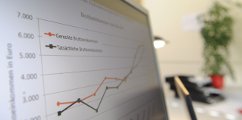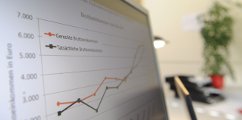Project Area A:
From Heterogeneities to Inequalities in the Life Course of Individuals
The six projects of the Project Area A in the Collaborative Research Center are dedicated to the genesis and effects of inequality-relevant features of heterogeneity in the individual life course under different contextual conditions.
Four classes of heterogeneity features (ascriptive features, cultural differentiations, skills, and activities) are discussed and analyzed in terms of their interaction. First, these features are essential because they determine individual life course decisions, being personal resources influencing the development of preferences. Second, they are features perceived and judged by collective actors, thus becoming criteria for selection and unequal treatment in the context of networks and organizations. And third, they play a role in the development of preferences and in judgments on perceived inequalities, most of all in the form of attitudes to justice.
Researching the emergence and effects of these individual features, as a contextualizing enlargement of purely individual life course research, is considered an important theoretical and methodological task for explanation-oriented work in the social sciences. Independently measured contextual development conditions are identified in families of origin, social networks, daycare, schools, and housing environments, right up to the variance of institutions of the nation state in international comparison.
Integrating life course and individual development will make it possible to distinguish psychological mechanisms from the path dependence of institutionalized life courses in the genesis of social inequalities and to analyze their interaction. The Project Area will also seek to make this research internationally comparable by drawing on the researchers’ own longitudinal data surveys, along with the SOEP’s secondary analyses and other data sources.
Project Area B:
From Heterogeneities to Inequalities in the Context of Organizations
The five projects of SFB 882’s Project Area B deal with organizations in the fields of education and work as actors and contexts of the production of inequalities. The common basic idea is that organizations contribute crucially to the production of social inequalities because they perceive and interpret individual heterogeneities very differently and selectively, making them criteria for membership and the distribution of resources. In this context, three problems are particularly striking:
(1) As organizations channel interactions by means of formal position structures and systems of rules, they contribute to establishing boundaries and differentiate the distribution of rewards and burdens. They thus not only transform individual heterogeneities into classified differences, but also open up selective realization opportunities based on differentiation criteria that are evaluated intra-organizationally. Identifying such processes and mechanisms permits more detailed claims to be made regarding exactly how organizations are important in the generation of inequalities.
(2) To the degree that organizations themselves are subject to horizontal differentiation and grant different advantages to their members, it becomes increasingly important to an individual’s opportunities for access and realization which organization he/she is included in at which stage of his/her life course, and where the organization currently stands in its own development.
Inequalities—in the sense of, for example, cumulative advantage and disadvantage—are also a result of the sequence of individual memberships of the same or different organizations, memberships that must be taken into account by inequality research.
(3) Educational and work organizations are institutionalized action contexts within which attributions are communicated and perpetuated. Through the examples of ethnically coded attributions, gender stereotypes, and normative attitudes to distributional justice, the Project Area analyzes in detail how this reproduction of attribution and interpretation patterns takes place within organizations.
The identification of mechanisms producing inequality, their organizational conditions, and their effects is carried out in the five projects from a perspective of methodological plurality: the empirical data are accessed using qualitative and quantitative approaches and a combination of both.
Project Area C:
From Heterogeneities to Inequalities beyond the Nation State
The four projects of SFB 882’s Project Area C address heterogeneity features, their combinations, and the resulting inequalities above the level of the nation state. The projects go beyond the scope of previous research, which has primarily considered income disparities in the international or global context, and discuss participation in a variety of fields: the labor market, education, health, politics, development cooperation, social security, and the social integration of migrants. The analysis of the interaction and intersection of transnationality as a heterogeneity feature plays an important role in this context, as do other features such as gender, religion, legal status, nationality, and ethnicity.
Transnationality refers to transactions within networks, groups, and organizations that result in continuous and dense cross-border processes. It points to processes that may potentially occur on a variety of levels or scales. A process-oriented, mechanismic analysis of inequalities beyond the nation state can be applied both to migrants and non-migrants.
A crucial question is that of comparison criteria. How are perceptions of, judgments on, and ways of dealing with social inequalities shifting, given that social comparison groups are no longer re-stricted to the closed spaced of nationality?
These questions, and others arising from them, will be addressed through research projects tackling a number of typical cases: the informal social security of mobile and immobile individuals, cross-border landscapes, the social construction of heterogeneity criteria in the fields of justice and politics, and finally the semantics of global inequality in the context of international organizations.












